Effective Pandemic Preparedness: Strategies for a Resilient Future
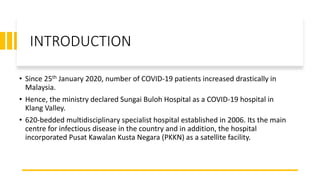
Anticipating the Unforeseen: The Essence of Pandemic Preparedness
In a world marked by uncertainty, the importance of pandemic preparedness cannot be overstated. This article delves into the strategies essential for creating a resilient foundation to navigate unforeseen challenges.
Learning from Past Experiences
The first pillar of effective pandemic preparedness is learning from historical outbreaks. Analyzing past pandemics equips us with valuable insights into the patterns of disease spread, enabling us to refine response strategies and allocate resources more effectively.
Strengthening Global Surveillance and Early Warning Systems
A robust surveillance system is the backbone of pandemic preparedness. Timely detection and reporting of potential threats allow for swift response measures. Collaborative global efforts in monitoring and sharing information can significantly enhance our ability to contain and manage outbreaks.
Building Healthcare Infrastructure Resilience
Preparing healthcare infrastructure for a surge in cases is critical. Adequate resources, well-trained healthcare professionals, and adaptable facilities ensure a resilient response. Investing in healthcare infrastructure is an investment in the well-being of communities during pandemics.
Implementing Effective Communication Strategies
Clear and transparent communication is key during a pandemic. Informing the public about risks, preventive measures, and the status of the situation fosters trust. Governments and health organizations must ensure that information is accessible, accurate, and consistently disseminated.
The Role of Technology in Pandemic Response
Technological advancements play a pivotal role in pandemic preparedness. From rapid diagnostic tools to data analytics for tracking and predicting outbreaks, technology empowers us to respond more efficiently. Integration of tech solutions enhances our overall preparedness and response capabilities.
Prioritizing Research and Development
Investing in research and development accelerates the creation of vaccines, treatments, and diagnostic tools. Pandemic preparedness requires continuous efforts to stay ahead of emerging threats. Collaboration between the scientific community, governments, and pharmaceutical industries is crucial for success.
Establishing International Collaboration
Pandemics transcend borders, necessitating a united global front. International collaboration in resource-sharing, knowledge exchange, and coordinated response efforts is imperative. A collective approach strengthens our ability to manage and mitigate the impact of pandemics.
Community Engagement and Empowerment
Empowering communities with knowledge and resources is a fundamental aspect of pandemic preparedness. Engaging with local communities, educating them on preventive measures, and fostering a sense of collective responsibility contribute to a more resilient society.
The Road Ahead: Pandemic Preparedness Strategies in Action
As we navigate the complexities of our global landscape, it’s crucial to actively implement and adapt pandemic preparedness strategies. Stay informed about the latest developments in pandemic preparedness strategies at Pandemic Preparedness Strategies, and let us collectively build a resilient future.
Navigating the Future: Effective Pandemic Preparedness Strategies
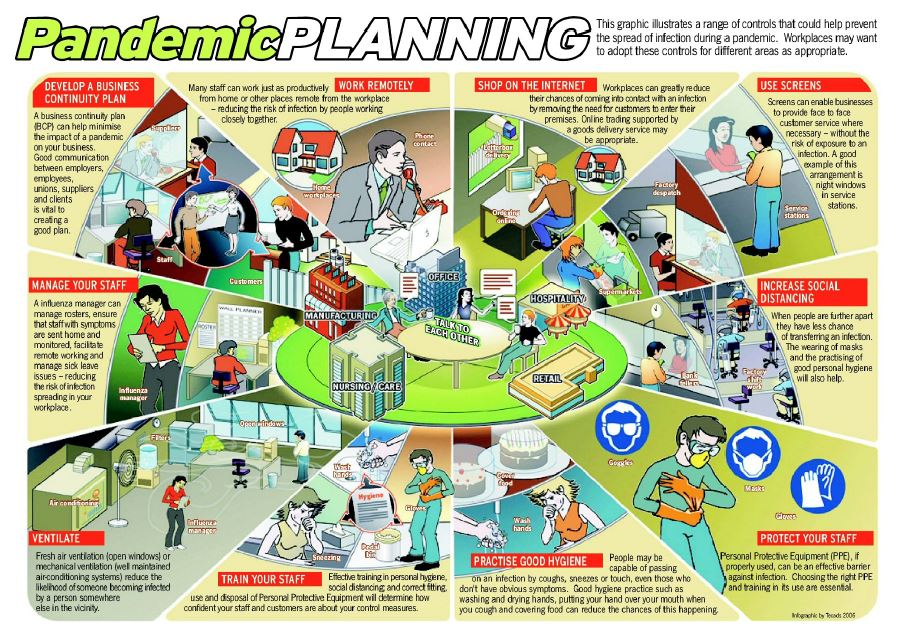
The Imperative of Pandemic Preparedness
The recent global events have underscored the critical need for robust pandemic preparedness plans. The world witnessed firsthand the far-reaching consequences of a health crisis, emphasizing the importance of proactive measures to safeguard public health and well-being.
Learning from Pandemic Response Challenges
The challenges faced during the initial phases of the pandemic response shed light on areas that required improvement in preparedness planning. Delays, shortages, and logistical hurdles revealed vulnerabilities in healthcare systems globally, prompting a reevaluation of strategies to enhance resilience.
Building Resilient Healthcare Systems
Pandemic preparedness involves more than just stockpiling medical supplies; it requires building resilient healthcare systems. This includes bolstering infrastructure, ensuring adequate healthcare personnel, and implementing effective communication strategies to disseminate information swiftly and accurately.
International Collaboration in Preparedness Efforts
The interconnected nature of the world demands a collaborative approach to pandemic preparedness. Countries and organizations need to share resources, knowledge, and best practices to fortify global defenses against potential health crises. International cooperation can bridge gaps in response capabilities and accelerate the development of effective strategies.
Technology as a Cornerstone in Preparedness
Technological advancements play a pivotal role in modern pandemic preparedness plans. From predictive modeling to data analytics, technology enables early detection, rapid response, and effective communication. Integrating these tools into preparedness strategies enhances overall responsiveness to emerging health threats.
Community Engagement and Preparedness
Engaging communities is a fundamental aspect of effective pandemic preparedness. Educating the public on preventive measures, fostering community resilience, and establishing clear communication channels are crucial components. Prepared communities act as the first line of defense in containing the spread of infectious diseases.
Strategic Stockpiling and Supply Chain Resilience
Strategic stockpiling of essential medical supplies and ensuring the resilience of supply chains are paramount in pandemic preparedness. Establishing protocols for the rapid production and distribution of medical resources can mitigate shortages and ensure timely access to critical supplies during a health crisis.
Flexible Response Strategies for Uncertain Futures
Pandemic preparedness plans must be adaptable and flexible to address the uncertainties of the future. Continuous monitoring, scenario planning, and regular updates to response strategies enable authorities to stay ahead of evolving threats and swiftly pivot in the face of unforeseen challenges.
Government Leadership and Coordination
Effective pandemic preparedness requires strong government leadership and coordination. Clear lines of communication, decisive decision-making, and the establishment of dedicated task forces contribute to a cohesive and unified response. Governments must lead by example to instill confidence and cooperation among the public.
Public-Private Partnerships in Preparedness
Collaboration between the public and private sectors is integral to comprehensive pandemic preparedness. Leveraging the strengths of both sectors fosters innovation, accelerates research and development, and ensures a more coordinated and efficient response to health emergencies.
To explore comprehensive insights into pandemic preparedness plans and their impact on consumer health, visit Pandemic Preparedness Plans. As we navigate the complexities of an ever-changing world, proactive and well-executed preparedness strategies are key to safeguarding global health and minimizing the impact of future pandemics.
Pandemic Risk Management: Strategies for Resilient Business Operations
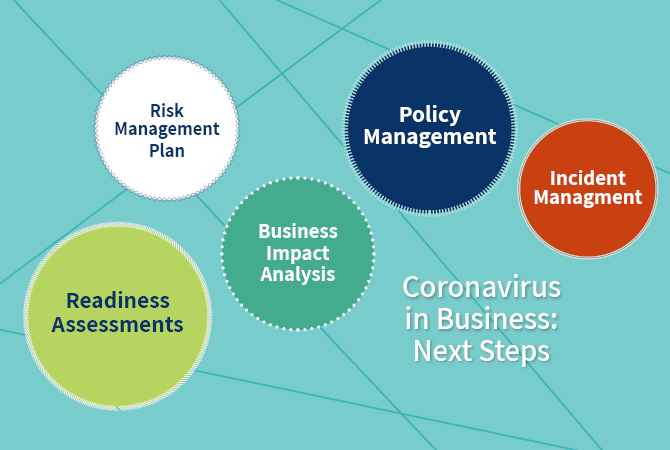
Pandemic Risk Management: Strategies for Resilient Business Operations
The ongoing global pandemic has underscored the critical importance of effective risk management strategies for businesses. As organizations navigate unprecedented challenges, a robust pandemic risk management plan becomes indispensable.
Understanding the Pandemic Landscape
In crafting an effective pandemic risk management strategy, the first step is gaining a comprehensive understanding of the current landscape. This involves staying informed about the latest developments, monitoring health guidelines, and assessing the specific risks that the organization faces.
Implementing Safety Protocols
One of the primary components of a robust pandemic risk management plan is the implementation of stringent safety protocols. This includes measures such as regular sanitization, social distancing, and providing personal protective equipment (PPE) to employees. These actions not only safeguard the workforce but also contribute to the overall resilience of the business.
Prioritizing Employee Health and Well-being
A key aspect of pandemic risk management is prioritizing the health and well-being of employees. This involves not only physical health but also addressing mental health challenges that may arise during these challenging times. Offering support services and fostering a culture of open communication can significantly contribute to employee well-being.
Developing Emergency Response Plans
To effectively manage pandemic-related risks, organizations must have well-defined emergency response plans in place. These plans should outline specific steps to be taken in the event of an outbreak within the workforce or the community, ensuring a swift and coordinated response.
Implementing Remote Work Solutions
The rise of remote work has become a pivotal element in pandemic risk management. Establishing reliable remote work solutions allows business operations to continue seamlessly while minimizing the risk of virus transmission among employees.
Ensuring Compliance with Health Guidelines
Adherence to health guidelines and regulations is non-negotiable in pandemic risk management. Organizations must stay vigilant and adapt their policies and practices in accordance with evolving guidelines to maintain a safe and compliant work environment.
Collaborating with Health Authorities
Building strong partnerships with health authorities and experts is crucial. Regular consultations with relevant health agencies can provide valuable insights and ensure that the organization’s risk management strategies align with the latest scientific and medical recommendations.
Investing in Training and Awareness Programs
Education is a powerful tool in pandemic risk management. Investing in training programs that educate employees about health protocols, safety measures, and the importance of adherence can significantly enhance the effectiveness of risk management efforts.
Monitoring and Adjusting Strategies
Pandemic risk management is an ongoing process that requires continuous monitoring and adjustment. Regularly assessing the effectiveness of implemented strategies, gathering feedback from employees, and staying abreast of emerging developments are essential for refining and improving the overall approach.
In conclusion, navigating the complexities of a pandemic requires a multifaceted and adaptive approach to risk management. By prioritizing employee well-being, implementing safety measures, and staying informed, organizations can build resilience and ensure the continuity of their operations in the face of unprecedented challenges.
For further insights into effective pandemic risk management, visit The Healthy Consumer website. Stay informed, stay safe.
Strategic Readiness: Pandemic Preparedness Training
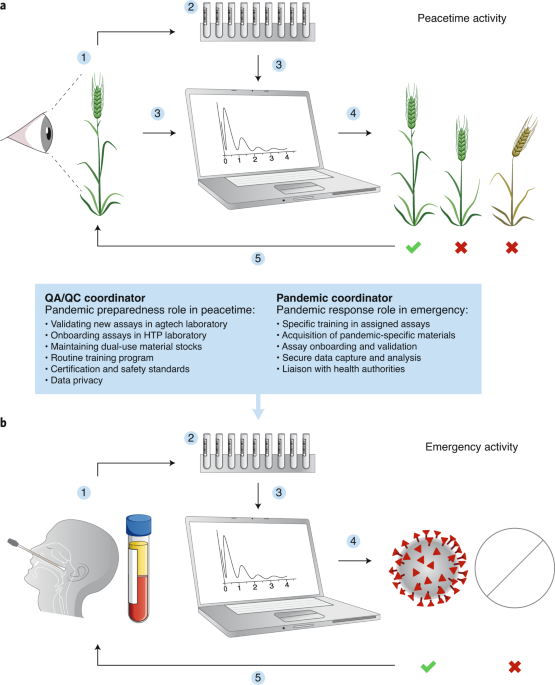
Strategic Readiness: Pandemic Preparedness Training
In the face of global health crises, pandemic preparedness training has emerged as a critical component in ensuring the resilience and adaptability of individuals, organizations, and communities. This comprehensive training equips participants with the knowledge and skills necessary to navigate and respond effectively to pandemics.
Understanding the Importance of Preparedness:
The first step in pandemic preparedness training is understanding the importance of being prepared. This section delves into the reasons why preparedness is crucial, emphasizing the unpredictable nature of pandemics and the potential impact on individuals, businesses, and public health systems.
Pandemic Preparedness Training: A Comprehensive Guide
For a comprehensive guide on pandemic preparedness training, visit Pandemic Preparedness Training for valuable insights and resources.
Risk Assessment and Planning:
Pandemic preparedness begins with a thorough risk assessment and planning process. This includes identifying potential risks, assessing vulnerabilities, and developing comprehensive plans to mitigate the impact of a pandemic. Participants learn how to create tailored strategies based on their specific context, ensuring a proactive rather than reactive approach.
Health and Safety Protocols:
A crucial aspect of pandemic preparedness training is the understanding and implementation of health and safety protocols. This involves educating participants on proper hygiene practices, the effective use of personal protective equipment (PPE), and adherence to public health guidelines. These protocols not only protect individuals but also contribute to broader community well-being.
Communication Strategies in Crisis:
Effective communication is paramount during a pandemic. This section focuses on training participants in communication strategies tailored for crisis situations. From internal communication within organizations to transparent and timely information dissemination to the public, these strategies help maintain trust and facilitate a coordinated response.
Role-Specific Training for Professionals:
Different professions require specific skills and knowledge in pandemic situations. This part of the training tailors information for various professionals, such as healthcare workers, emergency responders, and business leaders. Role-specific training ensures that each sector is well-prepared to fulfill its unique responsibilities during a pandemic.
Utilizing Technology for Preparedness:
In the digital age, technology plays a crucial role in pandemic preparedness. This segment explores the use of technology for early detection, monitoring, and communication. From surveillance systems to data analytics, participants learn how technology can enhance the effectiveness of pandemic response efforts.
Community Engagement and Support:
Community engagement is a cornerstone of effective pandemic preparedness. Training emphasizes the importance of community involvement, collaboration, and support networks. Participants learn how to engage with diverse communities, address concerns, and foster a sense of collective responsibility for health and well-being.
Simulations and Drills:
Hands-on experience is invaluable in pandemic preparedness training. Simulations and drills allow participants to apply their knowledge in realistic scenarios, honing their decision-making skills and teamwork. These exercises provide a practical understanding of the challenges posed by pandemics and enhance overall readiness.
Continuous Learning and Adaptation:
Pandemic preparedness is an ongoing process that requires continuous learning and adaptation. This section of the training focuses on creating a culture of preparedness, encouraging participants to stay informed, update plans regularly, and remain agile in the face of evolving health challenges.
Conclusion:
Pandemic preparedness training is not just a precautionary measure; it is a strategic investment in the resilience and well-being of individuals and communities. By understanding the importance of preparedness, conducting risk assessments, implementing health and safety protocols, fostering effective communication, providing role-specific training, leveraging technology, engaging with communities, and conducting simulations, participants are better equipped to navigate the complexities of pandemics. This comprehensive training sets the stage for a proactive and coordinated response, ensuring that individuals and organizations are strategically ready to face the challenges of global health crises.
Global Testing Standards: Protocols for Pandemic Preparedness

Global Testing Standards: Protocols for Pandemic Preparedness
The global response to pandemics relies heavily on effective testing protocols to identify, track, and manage the spread of infectious diseases. In this article, we explore the significance of global pandemic testing protocols and the essential role they play in preparedness.
Understanding the Importance of Testing Protocols
Effective testing is the cornerstone of pandemic preparedness. This section delves into the importance of testing protocols in identifying and isolating cases, understanding the prevalence of the virus, and informing public health strategies. Well-established protocols contribute to a more robust and coordinated global response.
Standardized Testing Approaches for Consistency
Consistency in testing approaches is crucial for accurate data collection and analysis. This part of the article discusses the benefits of standardized testing protocols. Consistent methods, including sample collection, testing techniques, and result reporting, enable comparability of data across regions and countries.
Rapid Testing for Timely Interventions
The speed of testing is paramount during a pandemic. This section explores the significance of rapid testing protocols for timely interventions. Quick turnaround times for test results empower health authorities to implement necessary measures swiftly, such as isolating cases and initiating contact tracing.
Global Collaboration in Testing Research and Development
Global collaboration is essential for advancing testing capabilities. This part of the article discusses the importance of international cooperation in research and development of testing protocols. Collaborative efforts contribute to the innovation and improvement of testing methods, ensuring their effectiveness in different contexts.
Testing Accessibility and Equity
Ensuring accessibility and equity in testing is vital for a comprehensive pandemic response. This section explores strategies to address disparities in testing access, including community testing sites, mobile testing units, and outreach programs. Equitable testing contributes to a more inclusive and effective public health strategy.
Integration of Testing with Contact Tracing Efforts
Testing protocols are most effective when integrated with robust contact tracing efforts. This part of the article discusses the synergy between testing and contact tracing, emphasizing the need for seamless coordination to identify and isolate cases, breaking the chains of transmission.
Public Communication on Testing Protocols
Effective communication is key to the success of testing protocols. This section explores the importance of transparent communication with the public regarding testing processes, accuracy, and the significance of testing in controlling the spread of the virus. Informed communities are more likely to actively participate in testing initiatives.
Challenges and Adaptability in Testing Protocols
Adaptability in testing protocols is essential as the situation evolves. This part of the article discusses the challenges faced in implementing testing protocols, such as evolving virus variants and changing transmission dynamics. An adaptable approach ensures that testing strategies remain effective in dynamic conditions.
TheHealthyConsumer.com: A Resource for Testing Protocol Insights
For comprehensive insights into global pandemic testing protocols, visit TheHealthyConsumer.com. The website offers articles, tips, and resources dedicated to understanding and navigating the complexities of testing strategies in these challenging times.
Looking Ahead: Continuous Improvement in Testing Protocols
In conclusion, global pandemic testing protocols are a dynamic aspect of public health. This concluding section reflects on the importance of continuous improvement, learning from experiences, and adapting testing protocols to enhance global preparedness for future pandemics.
In summary, testing protocols are a linchpin in the global response to pandemics. TheHealthyConsumer.com serves as a valuable resource for those seeking guidance on understanding and contributing to the ongoing efforts of global pandemic testing protocols in these unprecedented times.
Mitigating Global Risks: Strategies for Pandemic Preparedness
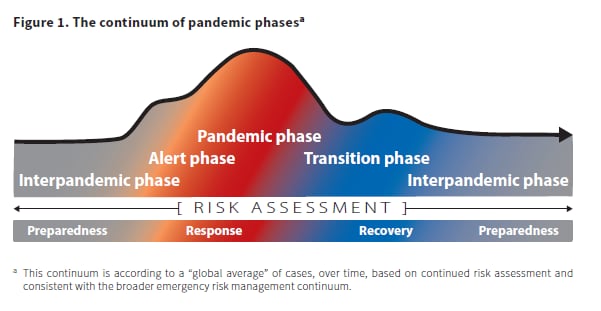
Strategies for Comprehensive Global Pandemic Risk Mitigation
The complexity of global pandemics necessitates proactive and comprehensive risk mitigation strategies. In this article, we explore key approaches to mitigate the risks associated with pandemics on a global scale, fostering resilience and preparedness.
Understanding the Global Nature of Pandemic Risks
Pandemics pose unique challenges due to their global nature. This section delves into the characteristics that make pandemics different from localized crises, emphasizing the need for a coordinated and global approach to effectively mitigate the associated risks.
Early Warning Systems and Surveillance
One of the pillars of global pandemic risk mitigation is the establishment of robust early warning systems. This part of the article discusses the importance of surveillance mechanisms, data analytics, and international cooperation in detecting and responding to potential pandemic threats at an early stage.
International Collaboration and Information Sharing
Mitigating global pandemic risks requires collaboration across borders. This section explores the significance of international cooperation and information sharing among nations, organizations, and public health agencies. Shared data and insights contribute to a more effective global response.
Healthcare Infrastructure Strengthening
Strengthening healthcare infrastructure globally is pivotal for effective risk mitigation. This part of the article discusses strategies for enhancing healthcare systems, including investing in medical facilities, training healthcare professionals, and ensuring access to essential medical supplies.
Vaccine Development and Distribution Strategies
The development and distribution of vaccines play a crucial role in pandemic risk mitigation. This section explores strategies for expediting vaccine development, ensuring equitable distribution, and fostering international collaboration to address global immunization challenges.
Public Health Education and Communication
Educating the public is key to mitigating the impact of a pandemic. This part of the article discusses the importance of public health education and communication campaigns. Clear, consistent, and accessible information empowers individuals to take preventive measures and make informed decisions.
Infrastructure for Remote Work and Learning
The pandemic has highlighted the need for resilient infrastructure to support remote work and learning. This section explores strategies for developing and enhancing digital infrastructure, ensuring that individuals can continue essential activities even during a global health crisis.
Economic Resilience and Financial Preparedness
Mitigating global pandemic risks extends to economic resilience. This part of the article discusses strategies for financial preparedness, including establishing emergency funds, implementing economic stimulus measures, and fostering international collaboration to address the economic fallout of pandemics.
Social Support Systems and Community Resilience
Communities play a vital role in pandemic risk mitigation. This section explores the importance of social support systems, community engagement, and building resilience at the local level. Empowered communities contribute to a more coordinated and effective global response.
TheHealthyConsumer.com: A Hub for Global Pandemic Risk Insights
For in-depth insights into global pandemic risk mitigation, visit TheHealthyConsumer.com. The website offers articles, tips, and resources dedicated to understanding and navigating the complexities of pandemic risk on a global scale.
Looking Ahead: Building a Resilient Global Future
In conclusion, global pandemic risk mitigation requires foresight, collaboration, and a commitment to building resilience. This concluding section reflects on the importance of learning from past experiences, adapting strategies, and continuously working towards a more resilient and prepared global future.
In summary, mitigating global pandemic risks involves a multifaceted approach that encompasses early warning systems, international collaboration, healthcare strengthening, and community resilience. TheHealthyConsumer.com serves as a valuable resource for those seeking guidance on understanding and contributing to the ongoing efforts of global pandemic risk mitigation.





